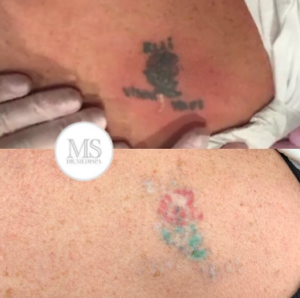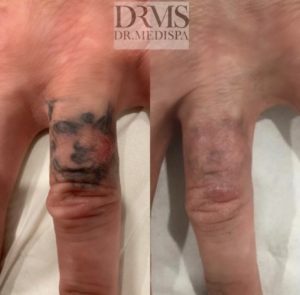Tattoo removal with Q-switched lasers
Q-switched lasers are recognised as the only really effective lasers for tattoo removal. They have the ability to reach deeper layers of skin tissues (especially compared to older generation laser technologies) and to break down all the available inks and combination of inks.
With new advances in Q-switched laser technology, we can achieve tattoo removal with minimal risk of scarring and permanent pigmentary alteration.
Since many wavelengths are needed to treat multi-coloured tattoos, three types of Q-switched lasers are needed to remove the full spectrum of pigments used in tattoos:
- Q-switched ruby laser (694 nm) – black, blue and green pigments
- Q-switched Nd:YAG laser (532 nm, 1064 nm) – red, yellow, orange, black and blue pigments
- Q-switched alexandrite laser (755 nm) – black, blue and green pigments.



